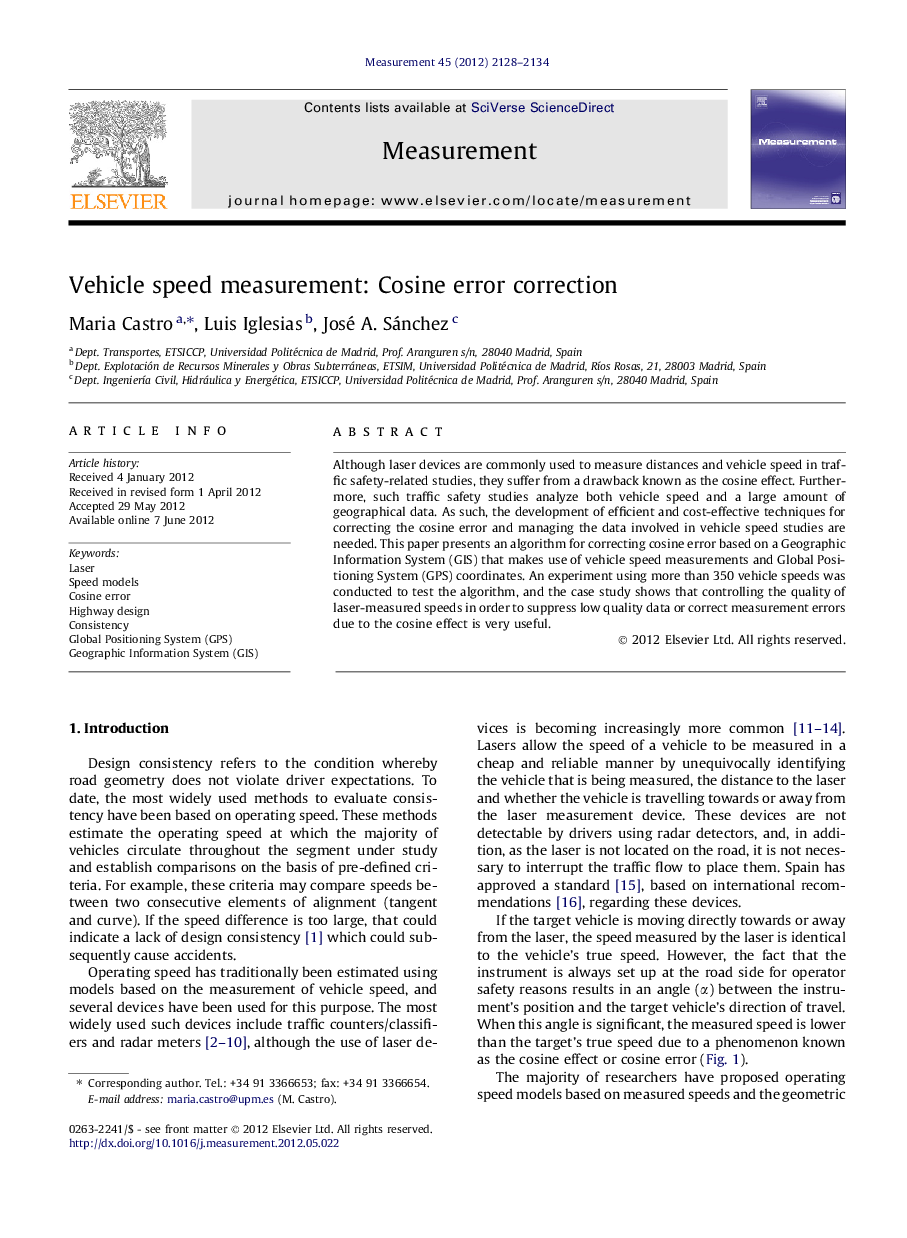| Article ID | Journal | Published Year | Pages | File Type |
|---|---|---|---|---|
| 730220 | Measurement | 2012 | 7 Pages |
Although laser devices are commonly used to measure distances and vehicle speed in traffic safety-related studies, they suffer from a drawback known as the cosine effect. Furthermore, such traffic safety studies analyze both vehicle speed and a large amount of geographical data. As such, the development of efficient and cost-effective techniques for correcting the cosine error and managing the data involved in vehicle speed studies are needed. This paper presents an algorithm for correcting cosine error based on a Geographic Information System (GIS) that makes use of vehicle speed measurements and Global Positioning System (GPS) coordinates. An experiment using more than 350 vehicle speeds was conducted to test the algorithm, and the case study shows that controlling the quality of laser-measured speeds in order to suppress low quality data or correct measurement errors due to the cosine effect is very useful.
► Laser devices are used to measure vehicle distance and speed in road studies. ► An algorithm, based on GIS, for correcting cosine error is presented. ► GIS use helps to manage data involved in vehicle speed studies. ► An experiment using more than 350 vehicles was conducted to test the algorithm. ► A discussion about laser location and measurement uncertainty is included.
